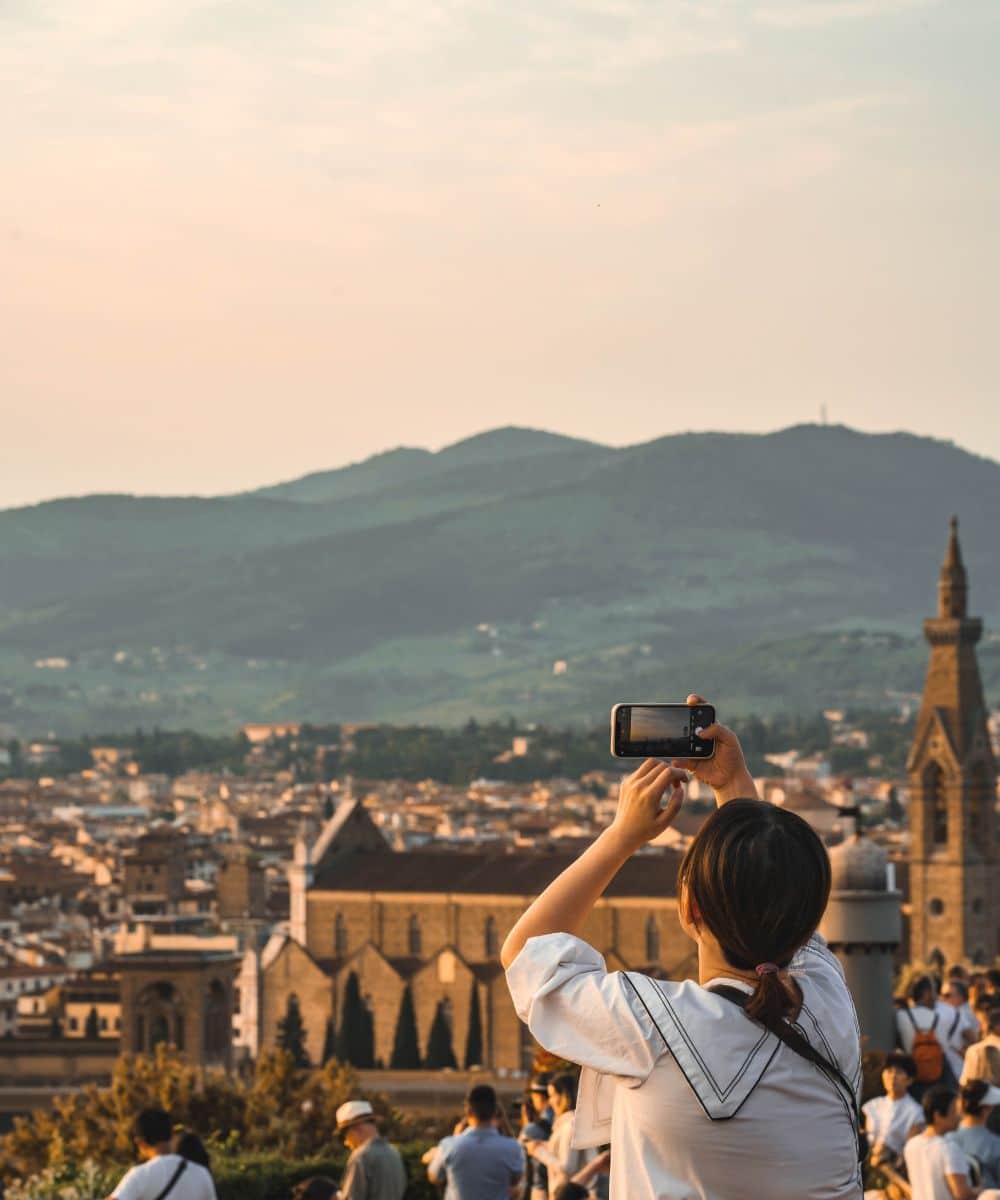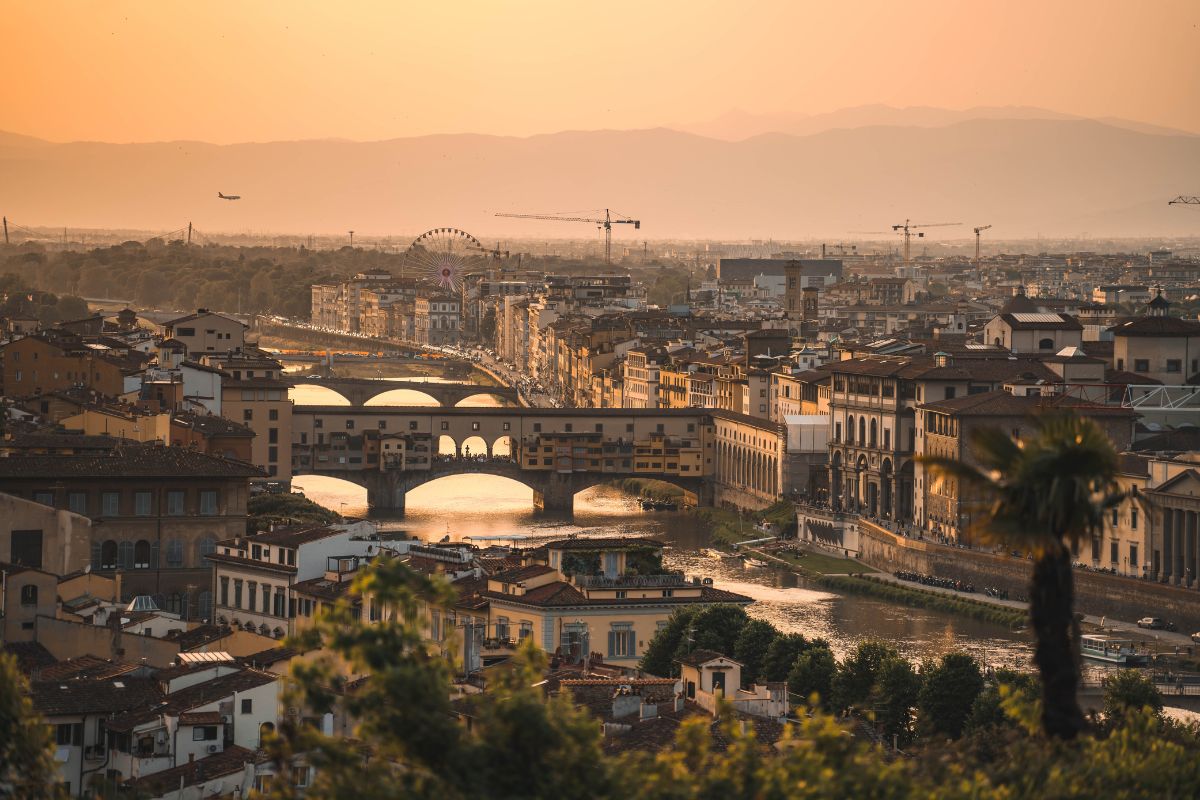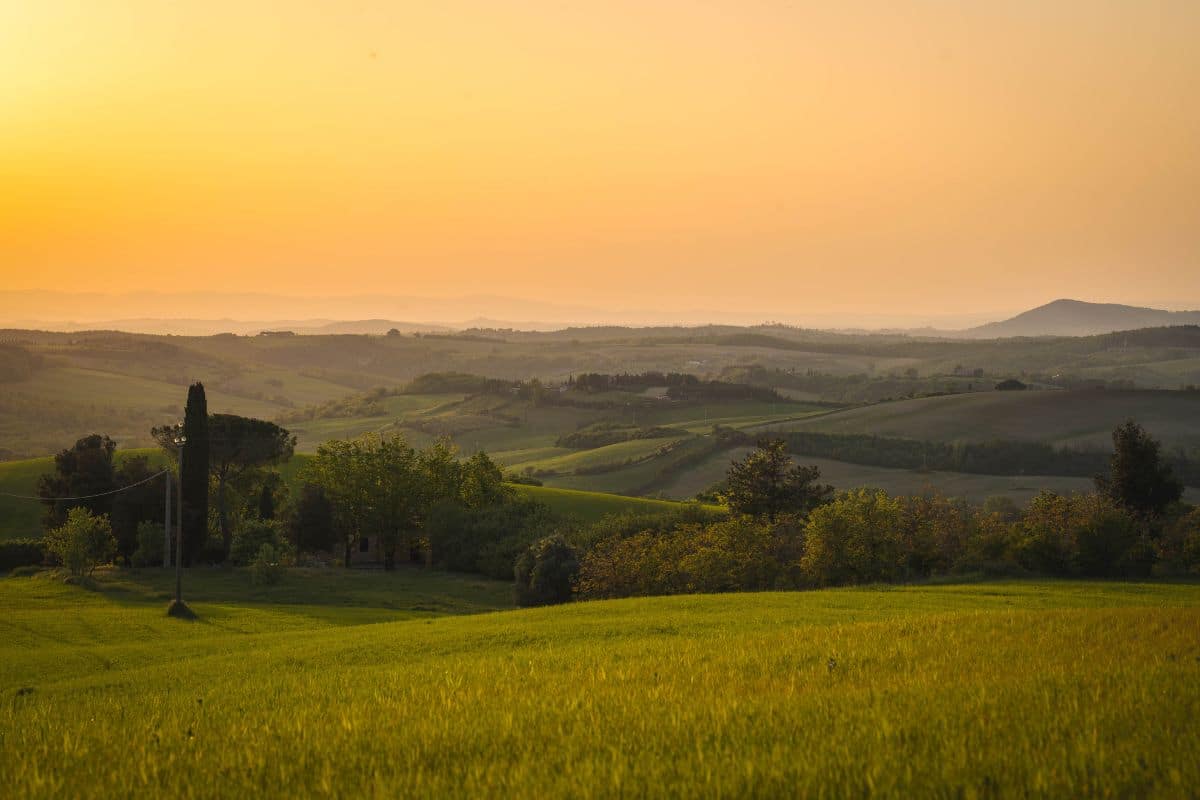Picture yourself setting off on a grand adventure, your camera ready to capture every breathtaking landscape, vibrant cityscape, and unique cultural moment you encounter. The anticipation of the unknown, the thrill of discovery, and the beauty of the world around you all beckon to be immortalized in stunning photographs. But here’s the secret: the right lens can transform your travel photos from good to extraordinary, making each shot a vivid memory.
Choosing the perfect lens for travel photography is like packing for a journey—you must find the perfect balance. Versatility, weight, and performance must align to suit a variety of scenarios, whether you’re capturing the serene expanse of a mountain range, the intricate details of a historic city, or the candid smiles of locals.
In this guide, we’ll discuss the essential factors to consider when selecting a travel lens. We’ll explore different lens types, determine your needs, and highlight the key factors you should consider when choosing the perfect lens for yourself.

Understanding Your Travel Photography Needs
Imagine setting off on your dream adventure, whether it’s trekking through the majestic mountains of Patagonia, wandering the bustling streets of Tokyo, or exploring the serene beaches of Santorini. Your camera is ready, but the question remains: which lens should you bring to capture these unforgettable moments?
1. Types of Photos You Want to Capture
Every journey is unique, and so are the photos you’ll want to take. Picture yourself standing on a cliff, overlooking a vast, breathtaking landscape. A wide-angle lens would be your best companion here, allowing you to capture the sweeping vistas and dramatic skies in all their glory.
Now, imagine strolling through a vibrant city, where every corner reveals a new story. A versatile zoom lens, like a 24-70mm, becomes invaluable, letting you seamlessly switch from wide shots of bustling markets to intimate portraits of street performers.
Or perhaps you’re keen on capturing the faces of the people you meet, each telling a different story of the places they inhabit. A prime lens with a wide aperture, such as a 50mm f/1.8, would be perfect, offering a sharp focus on your subject while beautifully blurring the background to highlight their expressions.
Let’s not forget the thrill of spotting wildlife in its natural habitat. A telephoto lens is essential for those magical moments, allowing you to capture close-up shots of animals without disturbing them from afar.

2. Travel Conditions
As you pack your bags, consider your destinations. If your journey takes you through unpredictable weather, like the misty hills of Scotland or the tropical rains of the Amazon, a weather-sealed lens will be your best friend, protecting your gear from moisture and dust.
Urban explorers will appreciate lightweight and compact lenses that make navigating crowded streets and public transportation easy. On the other hand, if your travels lead you off the beaten path, rugged and versatile lenses are crucial for hiking through dense forests or scaling rocky trails, where durability and adaptability are key.
Consider the activities you’ll engage in. For the avid hiker, lightweight lenses are essential to avoid being weighed down during long treks. If you’re planning city tours, a versatile zoom lens lets you capture a wide range of scenes without constantly changing lenses, making it easier to stay in the moment.
3. Weight and Portability
Every seasoned traveler knows the importance of packing light. Imagine wandering through a charming European village, stopping to snap a photo every few steps. Heavy lenses can quickly become cumbersome, making your leisurely stroll tiring. That’s why lightweight, compact lenses are a game-changer, offering ease of use without sacrificing quality.
Versatile lenses that can handle a variety of photography styles are also a lifesaver. Instead of lugging around multiple primes, a single high-quality zoom lens can cover all your needs, from wide-angle landscapes to detailed close-ups, ensuring you’re always ready to capture the perfect shot.
Read more: How To Choose A Camera Lens That Fits Your Needs.
Types of Lenses for Travel Photography
As you prepare for your journey, think about the various scenes you’ll encounter and the stories you want to tell through your photos. The lens you choose will be your storytelling companion, helping you capture each moment in its full beauty. Let’s explore the types of lenses that will enhance your travel photography, each suited for different kinds of adventures and photographic needs.
1. Wide-Angle Lenses
Imagine standing at the edge of a vast canyon, the landscape stretching endlessly before you. A wide-angle lens is essential, allowing you to capture the scene’s grandeur in a single frame. These lenses typically have a focal length ranging from 10mm to 35mm.
They are perfect for expansive landscapes, sweeping cityscapes, and intricate architectural details. Wide-angle lenses help to include more of the scene in your frame, providing a sense of scale and depth that standard lenses cannot achieve.

2. Standard Zoom Lenses
Picture yourself exploring the lively streets of a bustling market, where every corner offers a new and exciting photo opportunity. A standard zoom lens is incredibly versatile, allowing you to switch from wide shots to close-ups without changing lenses seamlessly. These lenses usually cover a focal length range from 24mm to 70mm.
They are ideal for dynamic environments and varied subjects, offering a combination of wide-angle, standard, and short telephoto capabilities in one convenient package. This versatility makes them an excellent choice for travel, where you may encounter a wide range of photographic opportunities.
3. Prime Lenses
Envision capturing the candid smiles of the locals or the serene expression of a street musician lost in their music. Prime lenses have a fixed focal length (commonly 35mm, 50mm, or 85mm) and offer superb image quality and excellent low-light performance.
They typically have larger apertures (like f/1.8 or f/1.4), making them ideal for portrait photography and situations where you want to create a beautiful bokeh effect to highlight your subject against a softly blurred background. Prime lenses are also generally lighter and more compact than zoom lenses, which is a significant advantage for travel photography.

4. Telephoto Lenses
Imagine yourself on a safari, spotting a lion basking in the sun far off in the distance. A telephoto lens brings distant subjects up close, making it indispensable for wildlife photography, sports, and any situation where you can’t physically get closer to your subject.
Telephoto lenses typically have focal lengths ranging from 70mm to 300mm or more. They allow you to capture close-up shots of subjects from a distance, providing a narrow field of view that isolates the subject from its surroundings, making it stand out more prominently in the frame.
Key Features to Consider
Let’s get more serious and consider some key features when choosing the perfect lens for travel photography.
1. Aperture
Lenses with larger apertures (like f/1.8 or f/2.8) allow more light to enter, making them ideal for low-light conditions and creating a shallow depth of field. For travel photography, I recommend a minimum aperture of f/2.8, as it provides good low-light performance and helps create beautiful bokeh for portraits and close-ups.
However, if weight and budget are concerns, a lens with an aperture of f/4 can still be effective, especially if it has image stabilization.
2. Focal Length
The focal length of a lens determines its field of view and magnification. Wide-angle lenses (10-35mm) are perfect for capturing broad scenes like landscapes and architecture, while telephoto lenses (70-300mm) excel at photographing distant subjects, such as wildlife or sports events.
A versatile standard zoom lens with a focal length range of 24-70mm is optimal for most travel scenarios. This range covers various scenes, from wide-angle shots to short telephoto, making it an excellent all-purpose travel lens.

3. Image Stabilization
Image stabilization (IS) is an essential feature for travel lenses, helping to reduce blur caused by camera shake. This is particularly useful when shooting in low light or without a tripod. IS technology allows you to capture sharp images even in challenging conditions.
While not absolutely crucial, having image stabilization can significantly enhance your ability to take clear, stable photos while on the move, especially if your lens has a narrower aperture or you plan to shoot handheld frequently.
4. Build Quality and Weather Sealing
Travel photography often exposes your gear to various environmental conditions. Lenses with robust build quality and weather sealing protect against dust, moisture, and minor impacts, ensuring reliability in diverse climates and terrains. This durability is crucial for maintaining performance and longevity, particularly in unpredictable weather.
Look for lenses labeled as weather-sealed or weather-resistant, which can withstand harsher conditions without compromising functionality.
5. Autofocus Speed and Accuracy
Fast and accurate autofocus is vital for capturing fleeting moments and moving subjects. Advanced autofocus systems with multiple focus points and tracking capabilities help you quickly lock onto your subject, ensuring sharp and well-focused images.
To evaluate autofocus performance, check reviews and specifications for features like ultrasonic motors (USM), stepper motors (STM), or linear motors, which are indicators of reliable and speedy autofocus mechanisms.
6. Weight and Portability
Lightweight and compact lenses are easier to carry and handle, reducing fatigue during long shooting sessions. An optimal travel lens should weigh less than 700 grams (1.5 pounds) to balance portability with performance. Compact lenses also fit more conveniently into travel bags, allowing you to move freely and focus on capturing your experiences without heavy equipment burdening you.

Recommended Lenses for Different Budgets
Selecting the right travel lens also depends on your budget. Whether you’re a beginner looking for an affordable option or a professional seeking top-tier performance, there’s a lens out there that will meet your needs. Here’s a breakdown of what you can expect at different price points, along with examples of common mount types.
Budget-Friendly Options
Features to Expect:
- Moderate maximum aperture (typically f/3.5-5.6)
- Basic build quality, often made of plastic to keep costs down
- Adequate image stabilization
- Autofocus that may be slower or noisier compared to higher-end lenses
Examples:
- Canon EF: Canon EF 50mm f/1.8 STM
- Canon EF-S: Canon EF-S 10-18mm f/4.5-5.6 IS STM
- Nikon F Mount: Nikon AF-S DX NIKKOR 35mm f/1.8G
- Sony E: Sony E 55-210mm f/4.5-6.3 OSS
- Fujifilm X Mount: Fujifilm XC 15-45mm f/3.5-5.6 OIS PZ
- Leica L: Panasonic Lumix S 20-60mm f/3.5-5.6
- Canon RF: Canon RF 24-105mm f/4-7.1 IS STM
- Nikon Z: Nikon Z DX 16-50mm f/3.5-6.3 VR
Mid-Range Options
Features to Expect:
- Larger maximum apertures (typically f/2.8-4)
- Improved build quality, often including some metal components
- Better image stabilization systems
- Faster and quieter autofocus mechanisms
Examples:
- Canon EF: Canon EF 24-105mm f/4L IS II USM
- Canon EF-S: Canon EF-S 17-55mm f/2.8 IS USM
- Nikon F Mount: Nikon 18-140mm f/3.5-5.6G ED VR
- Sony E: Sony E 18-135mm f/3.5-5.6 OSS
- Fujifilm X Mount: Fujifilm XF 18-55mm f/2.8-4 R LM OIS
- Leica L: Sigma 24-70mm f/2.8 DG DN Art
- Canon RF: Canon RF 24-105mm f/4L IS USM
- Nikon Z: Nikon Z 24-70mm f/4 S
High-End Options
Features to Expect:
- Very large maximum apertures (typically f/1.4-2.8)
- Excellent build quality, often fully weather-sealed and made of high-grade materials
- Advanced image stabilization
- Extremely fast, accurate, and silent autofocus systems
Examples:
- Canon EF: Canon EF 70-200mm f/2.8L IS III USM
- Nikon F Mount: Nikon AF-S NIKKOR 24-70mm f/2.8E ED VR
- Sony E: Sony FE 24-70mm f/2.8 GM
- Fujifilm X Mount: Fujifilm XF 16-55mm f/2.8 R LM WR
- Leica L: Leica Vario-Elmarit-SL 24-90mm f/2.8-4 ASPH
- Canon RF: Canon RF 24-70mm f/2.8L IS USM
- Nikon Z: Nikon Z 70-200mm f/2.8 VR S
When selecting a lens within your budget, consider the balance between the features you need and the performance you can afford. Budget-friendly lenses are great for beginners or those who prioritize lightweight gear, while mid-range options offer a good mix of quality and cost. High-end lenses provide the best performance and build quality, ideal for professionals or enthusiasts who demand the highest standards from their equipment.
I also have a large table of Sony E-mount lenses if you are shooting with Sony.
My Favorite Travel Lens: Tamron 35-150mm f/2-2.8 Di III VXD
The Tamron 35-150mm f/2-2.8 Di III VXD has quickly become my go-to lens for travel photography. The versatility of the 35-150mm focal length range is exceptional, allowing me to seamlessly transition from capturing wide-angle landscapes to detailed telephoto portraits. This flexibility eliminates the need for multiple lenses, making it an ideal companion for any travel scenario.
One of the most outstanding features of this lens is its large aperture, ranging from f/2 to f/2.8. This wide aperture is perfect for low-light environments and produces stunning bokeh, adding a professional touch to portraits and isolating subjects beautifully against a blurred background.
While the lens is slightly heavier than other options, its comprehensive focal length range and superior image quality make it worth the extra weight. This lens effectively replaces the need for several lenses, saving space and time during travel.
Conclusion
Choosing the right lens for travel photography involves balancing versatility, weight, and performance. Consider key factors like aperture, focal length, image stabilization, build quality, autofocus speed, and portability. If you’re still unsure, a standard zoom lens, such as a 24-70mm, is a versatile choice for most scenarios. For those serious about photography, I highly recommend my favorite, the Tamron 35-150mm f/2-2.8 Di III VXD, for its exceptional range and performance.